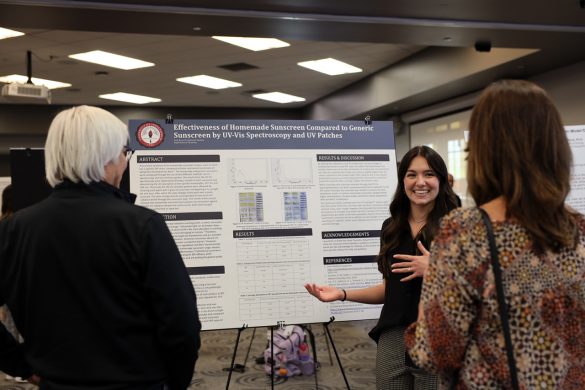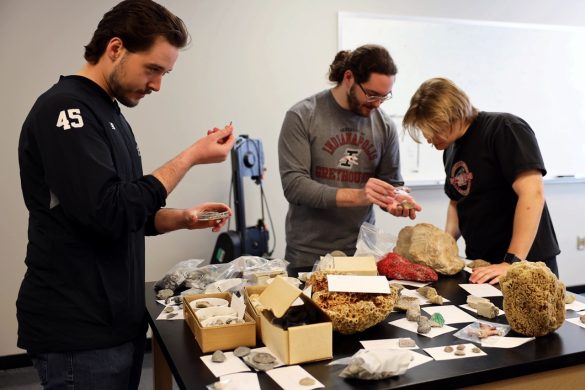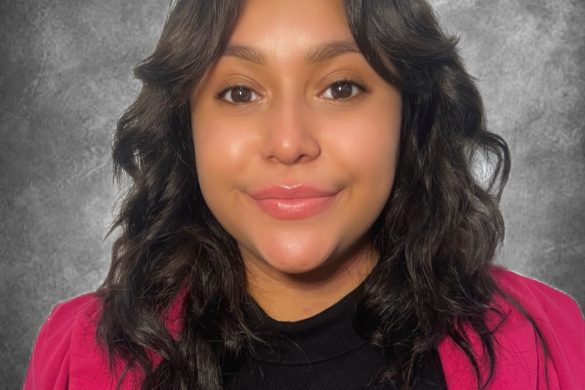The holiday schedule in Russia is a little different from the schedule in the United States. New Year’s is still celebrated from Dec. 31 to Jan. 1, but the traditions are like an American Christmas, according to Tatiana Zhuravleva, an international student from Russia working toward her master’s degree in management and leadership.
“We put up a Christmas tree, make all those dishes, you know, cook delicious meals,” Zhuravleva said. “With family and friends, we exchange gifts. All the stuff you do here for Christmas, we do for New Year.”
Zhuravleva said that cooking plays a large role in their New Year’s traditions. However, unlike in the United States many of the dishes are meat-based, hearty meals to help Russians prepare for the harsh winter weather.
“For us, eating a lot is important, and it is supposed to look good, [like] how we set the table,” Zhuravleva said. “If it is a holiday, [there is] no plastic silverware; we use real plates, and it is supposed to look fancy because we go from one house or apartment [to the next]…back home it is

In Russia, during Maslenica, which takes place in March, people make scarecrows and burn them to represent their desire for winter to leave. Photo contributed by Tatiana Zhuravleva
more apartments, and we go [from] neighbor to neighbor…. We make and bring gifts for them.”
Her favorite holiday dish is “herring under fur coat,” a layered pie consisting of pickled herring, onions, potatoes, carrots and beet roots. According to Zhuravleva, Russians make many pies, although most of them are filled with meat and not sugary fillings.
The day and night is spent cooking, and when midnight arrives, the Russian president speaks to the nation, congratulating them on the New Year. She said that they toast the occasion with champagne.
In Russia, Christmas is celebrated on Jan. 7 and is a religious holiday.
“Back in the day, because of the communist regime, we couldn’t even celebrate Christmas, because it was against the law,” Zhuravleva said. “Most people were atheists, so in the government they didn’t want people to celebrate any religious holidays. We [Russia] started celebrating Christmas not that long ago….

For Kreshenie, on Jan. 19, a block of ice is removed from the river, a prayer is said and Russians will go under the water three times to be baptized. Photo contributed by Tatiana Zhuravleva
Christmas is more a religious holiday. We don’t exchange gifts. We cook. We go to church. It’s just more religious, not about fun.”
Although Russia does not have Santa Claus, they do have a similar character.
“For New Year, when I was a kid, we kind of had a tradition—instead of Santa, we have Frost Father,” Zhuravleva said. “He has a niece, Snow Woman…. He comes to your house and brings the gifts.”
Kreshenie, a day dedicated to new beginnings and baptism, is on Jan. 19. During Kreshenie, people are baptized in a river after a block of ice is taken out, opening up a section large enough for someone to fit in.
“The priest says the prayer over the water, kind of like baptizing it,” Zhuravleva said. “The people have to go all the way under the water three times—[to represent the] Father, Son and Holy Spirit—with their head.”
Defender of the Motherland Day, a day comparable to Veterans Day in the United States is on Feb. 23.
“It is known as the Army Day or Men’s Day,” Zhuravleva said. “It is a tribute to all the generations of Russian soldiers…. Usually the women make
gifts for the men. As a daughter, I would make a gift for my dad. He used to be in the army.”
Finishing off the winter holidays is Maslenica, a celebration at the end of March dedicated to the end of winter and the arrival of spring. As a part of the celebration, scarecrows are constructed to represent winter and then are burned to signify the Russians desire for winter to leave.
“We have the whole week for this holiday,” Zhuravleva said. “There are different activities outside and stuff like that. [We] make crepes a lot. At the end of the week, there is a Sunday when people have to forgive each other for anything in the past. If you had a conflict with your friend that year, you would call or meet your friend and talk about it and forgive each other for anything you have done.”
Although the specific details of these winter holidays are different from the way they are in the United States, according to Zhuravleva, plenty of food and time with friends and family are the universal parts of the holidays.







